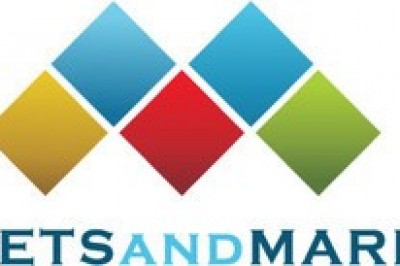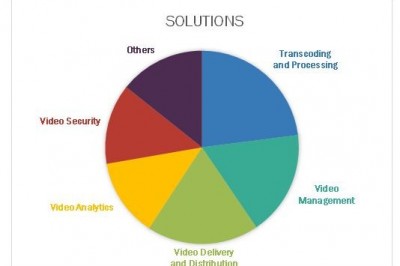Best Technology to Build a Video Streaming Platform
Technology is developing faster and faster with each passing year. This applies to almost all spheres of life. One of the most innovative areas today is personal mobile gadgets that modern people are accustomed to using almost every minute of everyday life. New applications released by developers are aimed at maximizing the diversity of their customers' leisure and making their lives as comfortable as possible.
One of the most interesting features that have appeared in recent years is the ability to create video broadcasts and share them with the world in real-time. Thanks to developers of mobile apps, now it is also available to users of mobile devices. Moreover, this new technology became instantly popular in business. Corporations and start-ups find dozens of applications for live video streaming: services and goods promotion, training, team building, etc.
So, what is a live video broadcast (stream) in its essence?
In short, this is the process of transmitting a video signal from the operator's location in real-time.
Video streaming app development enables the viewer to see events through the eyes of the one who initiated the live broadcast.
In creating live broadcast applications, developers are exploring all the possible and impossible ways for this new popular idea’s implementations to attract more users and increase competitiveness.
Technologies for Live Streaming Apps
What exactly is live video streaming app technology? What kinds of communication can be helpful for that? What does the video streaming app technology stack consist of?
The technological stack is a set of all software and hardware capabilities that ensure the functioning of any technology. Simpler: these are all technological means (technologies, platforms, languages, frameworks) for creating, in this case, a mobile video streaming application.
Technologies Used in the Creation of Live Video Streaming Apps
C++ (GO), HTML5/CSS3, Java, JavaScript (Node.js, React, RxJS, Restify, EmberJS, AngularJS, BackboneJS), Python, Ruby (Ruby on Rails),
Data storage and management: Atlas-DB, Cassandra, MySQL, Oracle, PostgreSQL
Amazon EC2/S3 cloud computing platforms
Analytics: Google Analytics, Hadoop, Hive, MixPanel, Mode, Parquet, Pig, Presto, Spark
Amazon CloudFront, Cloudflare, Fastly, Open Connect
Adobe HTTP Dynamic Streaming, Apple HTTP Live Streaming, M2TS, MPEG-DASH, Microsoft Smooth Streaming, RTMP
Media formats: H.264
Media containers: FLV, MP4
Brightcove, Contus Vplay, DaCast, Flash Media Server, JW Live, Livestream, Muvi, Ustream, Vimeo PRO, Wowza Media Systems
Google Maps, MapKit, and Core Location (iOS)
Firebase, PubNub, Twilio Messaging
Let’s go in detail about the technology used for the video streaming business down below:
Encode live video into a playable file format
To store or reproduce the final output signal, the video signal must be compressed into a "codec" using an encoder. Codecs come in different shapes and sizes. One industry standard is H.264, which is commonly used for streaming and broadcasting. H.264 compresses video for easy playback from gigabytes to megabytes.
An encoder can be built into the camera itself, but it can also be a separate device, computer software, or mobile app. In many cases, this is built into modern streaming software.
After the video stream is compressed by an encoder, the video data must still be encapsulated in Real Time Transfer Protocol (RTP) for delivery over the Internet. As a large stream of continuous data, it should be broken down into digestible chunks or packets of information. These packets are later recombined and decoded into a continuous signal by the media player. Many coders use RTMP as a standard.
Deliver streaming media to servers
After packaging, the stream is extracted or directed to the media server. The media server can be somewhere in the cloud or on the same system as the encoder or remote control.
Transcoding, transcoding, transcoding and transmuxing
Media servers receive the stream from the encoder and convert the video as needed. Throughput is the amount of data sent to the media server. Media servers can convert data to a new codec. They can convert videos to different resolutions and convert the data to create different bitrates. Media servers can repackage or transport data using different protocols. The data transmitted by the media server is called output. But let's talk about who's watching live and why a media server is important by looking at what makes watching great.
Adaptive video streaming bitrate
You want your live stream to reach as many viewers as possible, but not everyone watches your stream the same way. Some viewers have big screens, some have cell phones, some have great internet, some may even use bad Wi-Fi or LTE. This is where Adaptive Bit Stream (ABR) becomes very important. A media server creates "paid" ABRs, which are like menu items with all the different resolutions and bitrates they were created for. Video routing technology then selects the best set for viewing based on screen size and available network bandwidth, dynamically switching between options as resources fluctuate. In short, ABR provides the best live broadcast quality for your audience's viewing conditions.
Stream video to any device on any connection
Your viewers can watch on a set-top box, in a web browser or through an app on their mobile phone. Depending on what they are using, they may need a different protocol. The TV field can still use RTMP, only HLS accepts your iPhone, and your browser can work on MPEG. Again, your media server can convert any protocol called your direct delivery and you can confirm their choice regardless of their choice of device. There are many other things a media server can do, such as injecting additional information, saving the stream as a video file, and performing similar audio conversions. And remember, with a stream coming to the media server (upload) and multiple renderings (output), you need more output bandwidth to support a large audience.
Bringing the best streaming experience to viewers around the world
Back to the audience. The problem is even more because we don't know where they are. The further they are from the media server, the longer it takes the signal to reach them. This distance causes delay and buffering. To solve some of these problems, many broadcasters use a content delivery network (CDN). It is a network of media servers around the world that is capable of processing large amounts of data. The servers closest to the browser are called edge servers. The data stream is distributed over the network and finally connects to the audience at the edge server closest to them.
Conclusion
That’s all about the video streaming platform and the technology used for better development and business scaling ability.
If you are planning to build a video streaming platform for your business, Flicknexs is the best choice, as they've taken years to develop such a video-on-demand solution and compete with the many players providing similar things in the market.



























